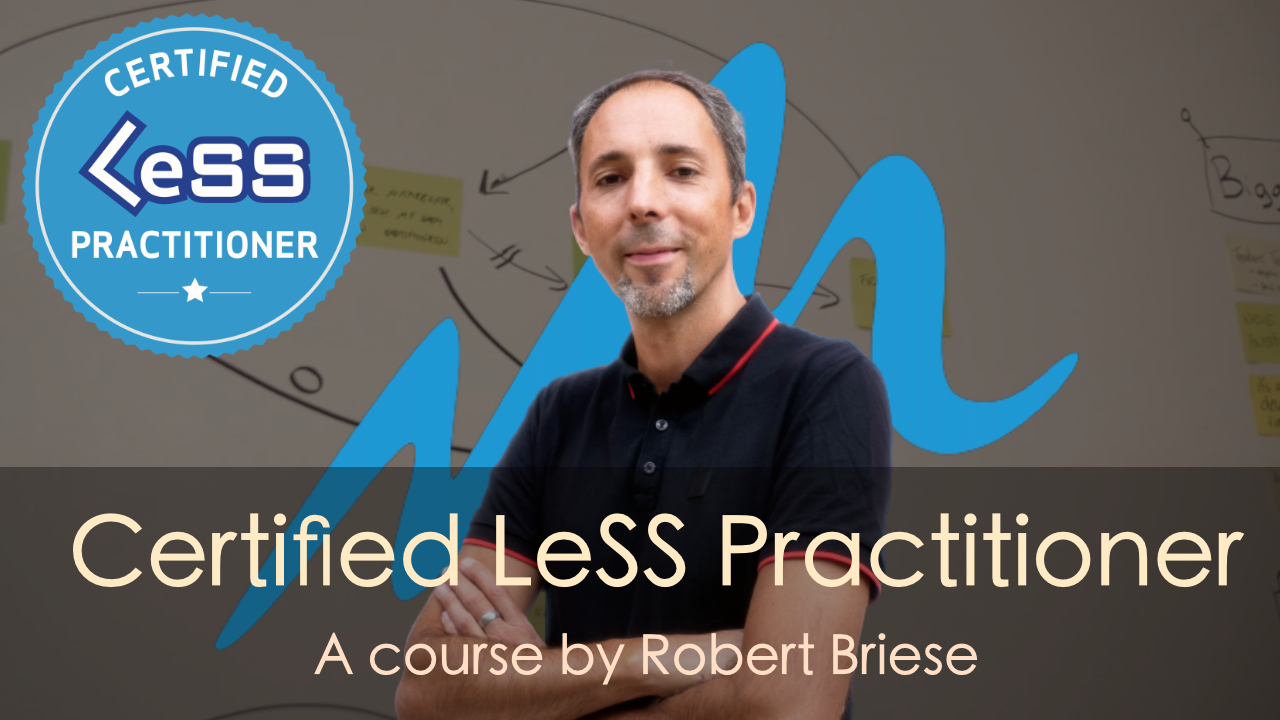Certified LeSS Practitioner - A course for creating agile organizations with Robert Briese

Certified LeSS Practitioner - A course for creating agile organizations with Robert Briese
"Dont do agile, be agile"
Large-Scale Scrum or LeSS continues the major discoveries that are transforming the world of management by showing how to implement Agile and Scrum at scale. LeSS shows how to handle large and complex development. Self-managed teams are not just tiny curiosities. They can manage vast international operations of great technical complexity. The practices are not only scalable, unlike bureaucracy, they are scalable without sclerosis.
Less continues the process of fundamentally reinventing management by incorporating the hard-won lessons of experience over more than a decade in scaling the management methods of Agile and Scrum. It shows how to cope with immense complexity by creating simplicity.
LeSS focuses on the minimal essence required when scaling, including continuous attention to technical excellence, and a mindest of continuous experimentation. It involves forever trying new experiments in an effort to improve. Like Scrum itself, LeSS strives for a balance between abstract principled and concrete practices.
And like Scrum, LeSS is not a process or a technique for building products. Rather, it is a framework within which processes and techniques can be adapted to meet the needs of the particular situation. It aims to make clear how product management and development practices can enable continuous improvement that adds value to customers.
Rather than providing fixed answers, LeSS provides the starting point for understanding and adopting its deeper principles. Instead of asking "How can we do Agile at scale in our complex hierarchical bureaucracy?" it asks a different and deeper questions, "How can we simplify the organization, and be Agile?"
LeSS strives to achieve this balance for larger product groups. It adds more concrete structure to Scrum, while maintaining radical transparency and emphasizing the inspect-and-adapt cycle so that groups can continuously improve their own ways of working. It addresses the basic question: How do we take what works really well at the individual team level and make that happen at a much wider level in the organization?





